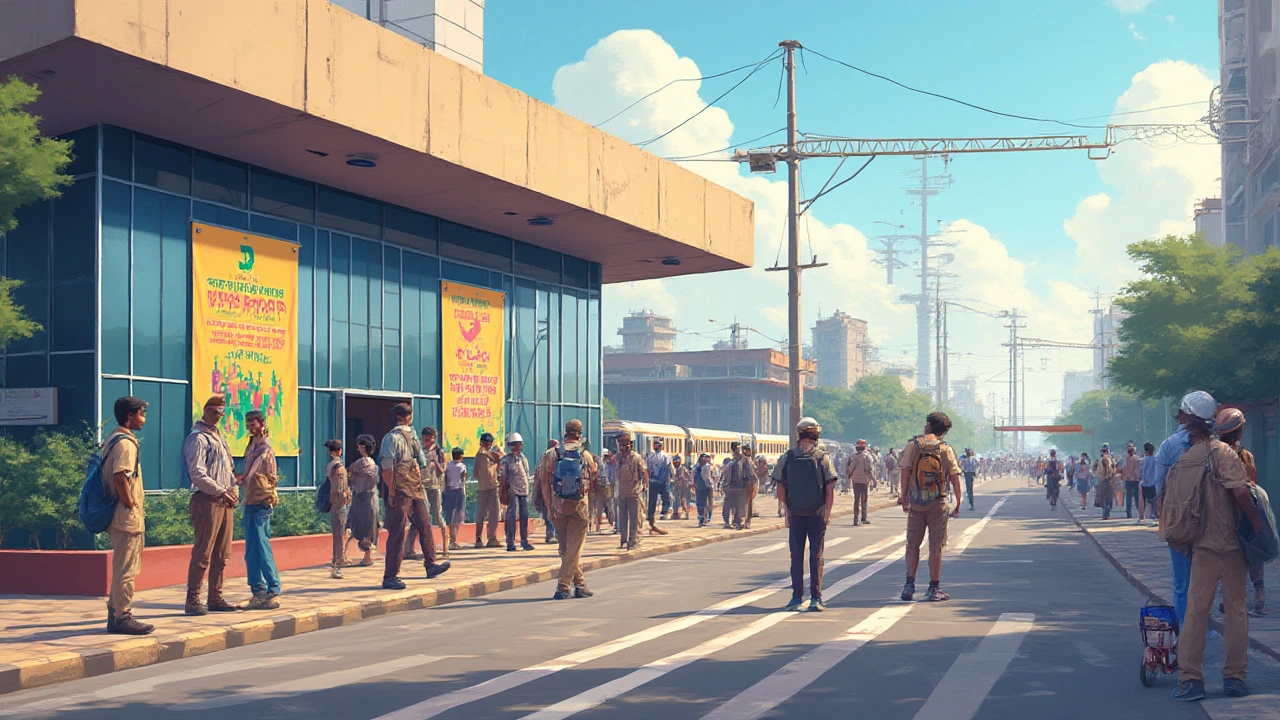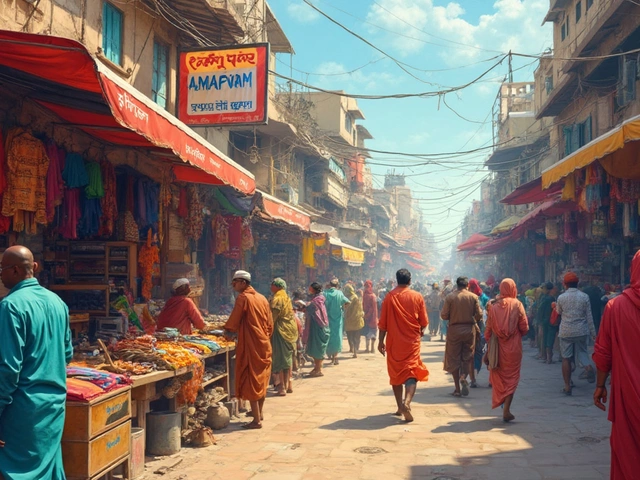If you’ve ever stood in a long government line in India, you know schemes touch almost every corner of daily life. From the hopeful faces at ration shops to the buzz in rural employment offices, these programs promise more than just paperwork—they can change entire destinies. But with so many acronyms, categories, and political promises, it’s no wonder folks feel lost. Let’s unpack the role of government schemes in India. Are they simply names on banners, or do they really break the cycle of hardship and open up new doors for lakhs (that’s hundreds of thousands) of people?
What Really Drives Government Schemes in India?
Poverty is stubborn, and India knows it firsthand. After independence, the dream was quick progress for all. Yet, rural poverty, hunger, gender inequality, and health gaps hung around. Enter government schemes—these are not random handouts, but structured responses to big social problems. Think of Mahatma Gandhi National Rural Employment Guarantee Act (MGNREGA). The law didn’t just toss jobs to people; it guaranteed every rural family at least 100 days of wage labor a year. In the 2023-24 fiscal, MGNREGA reached over 13 crore households. That’s a mind-boggling reach—and it is just one program.
Another huge driver is India’s size and diversity. Problems in Assam are way different from Maharashtra or Tamil Nadu. So, you see hundreds of schemes—from scholarships for tribal students to housing aid in the cities. Just flip through the budget documents, and you’ll spot acronyms everywhere: PMAY (housing), PM Kisan (farmer income), Ayushman Bharat (health insurance), and so on. Each tries to do one thing: fill a gap that private players or the open market just can’t plug.
Politics, of course, plays a massive role. Before every election, new schemes seem to bloom—free cycles for girls, laptops for students, pensions for the elderly. Critics sometimes joke these are “freebies” meant to win votes. But cross out every scheme as a mere political move, and you miss the reality: hundreds of millions depend on these to get through the month, learn a skill, or buy medicines.
International comparisons pop up too. The UN and World Bank have often pointed at India’s “social safety net” experiments, especially when compared to places like Brazil, South Africa, or Indonesia. No two schemes look the same across borders, but India’s system is massive in both size and ambition.
Finally, just look at the numbers. NITI Aayog, the government’s own think tank, reported in 2023 that schemes helped 135 million Indians escape poverty between 2015 and 2022. That’s not theoretical—it translates to meals eaten, schools attended, children vaccinated, and villages electrified.
Not Just Money: How Schemes Deliver Change (and Where They Struggle)
If you imagine government schemes as sacks of cash dropped from helicopters, think again. The most effective ones target three things: services, empowerment, and protection from risk. For instance, under the Ayushman Bharat program, over 550 million people are now eligible for free hospital care. If a farmer’s child breaks a leg, the hospital bill often decides if a family stays afloat or goes under. Ayushman Bharat steps in before that happens.
In many villages, government schemes mean the difference between girls going to secondary school or dropping out. The Kanya Sumangala Yojana in Uttar Pradesh, for example, gives cash at regular intervals for every milestone—from birth, vaccinations, school enrollment, to high school graduation. Parents who once thought only sons deserved investment now suddenly have incentives to push girls forward.
Take cooking gas: Ujjwala Yojana has given free LPG connections to more than 90 million poor women. The result? No more hours spent breathing smoky firewood fumes. Studies by the Indian Council of Medical Research showed a drop in lung diseases and women having more time for side businesses or education. It’s a health and economic win.
Direct Benefit Transfers (DBT) have tried to plug leaks. It’s no secret that middlemen once gobbled up benefits. Now, subsidies for fertilizers, scholarships, or gas reach directly into bank accounts. The World Bank praised DBT in 2022 for reducing duplication and saving the government over Rs 1.1 trillion since its introduction.
But it’s not all rosy. Red tape is sticky—one missing document, and families miss out. Corruption fights back, as “ghost beneficiaries” sneak payments meant for real people. Technology brings new problems: many older adults and poor villagers struggle with online forms, biometric Aadhaar systems, and SMS notifications. A misplaced fingerprint can mean no ration for the month.
Agriculture schemes like PM Kisan give Rs 6,000 yearly to small farmers. It helps, but with floods, droughts, and price crashes, many say more systemic changes—better irrigation, crop insurance, and fair markets—matter just as much as cash grants. Still, surveys by the Ministry of Agriculture in 2024 revealed about 70% of PM Kisan recipients reported improved ability to buy seeds and pay for school fees.
Then there’s the urban-rural divide. Cities see smart card bus passes and health clinics in the lanes. But in remote hamlets, people may trek miles just to get forms stamped or unlock missing Aadhaar details. States innovate in their own ways, like Odisha’s Mo Jungle Jami Yojana (community forest rights) that put control of resources in tribal hands. Yet, nationwide coverage is uneven and sometimes slow, leading to “scheme deserts” in interior regions.

The Invisible Impact: How Schemes Shape Daily Lives
On paper, government initiatives sound abstract—percentages, crore-rupee budgets, famous faces at launch events. But step into an anganwadi (child care center) or talk to anyone who’s received a free gas cylinder or scholarship, and things get real fast. Schemes mean babies get vaccinated, college dreams start for small-town kids, and families have safety nets when a monsoon wipes out a harvest.
Here’s something you won’t find in glossy reports: a majority of families in rural Bihar or Odisha often first learn about programs from a neighbor or the local shopkeeper, not a government notice. Word of mouth, mobile phone alerts, and, in many places, WhatsApp forwards have become unofficial channels. I’ve seen pensioners show up at public parks in Delhi on “disbursement days,” comparing notes about which branch is fastest.
Social welfare isn’t just for the desperate. Middle class families use schemes too—think education loans, health insurance, or startups using benefits under Mudra Yojana. Government programs also shape how families spend and save. Women who get direct payments are more likely to join local self-help groups, fund their daughter’s school uniform, or start micro-size shops. It ripples quietly, shifting mindsets over generations.
Trouble with paperwork and technology is stubborn, but recent efforts like Common Service Centers (CSCs) have helped. Run by local entrepreneurs, these centers help millions each year navigate form-filling, Aadhaar updates, and scheme registrations. A study by Digital Empowerment Foundation in 2023 noted nearly 40 million people across India used CSCs that year. When you can fix things locally, the benefits reach deeper.
Yet, people can get left out. Migrant workers, seasonal laborers, and nomadic tribes often slip through cracks—either because their documents don’t match, or because they move too often to fit the system’s boxes. The “One Nation, One Ration Card” program was launched to fix this, allowing people to collect food grains anywhere in India, but adapting every shop is a huge challenge.
Even pets sometimes feel the change. The animal husbandry schemes that have been popular since 2014 aren’t just for cows and buffaloes—some include urban dog vaccination and sterilization programs, something Max, my own dog, and his street buddies have benefited from last year when the local shelter set up free camps. These touches show how far government intervention can reach.
There’s a psychological angle, too. When people see visible signs of schemes—solar lamps in villages, school meals, public toilets—they start to believe change is possible. That confidence often leads to new demands and even more engagement in local governance.
Getting the Best Out of Government Schemes: Tips, Insights, and Where It’s Headed
Want to make schemes work for you or your community? First, keep documents handy—Aadhaar, bank passbook, income and identity certificates, and phone number are your basics. Most new schemes require mobile-linked Aadhaar for DBT, so get that sorted before you apply. Don’t trust anyone who promises to “speed up” your paperwork for a fee; most online and CSC services are free or cost a token amount.
Keep an eye on state portals and local newspapers for application windows. Many schemes get huge crowds but have small quotas, so quick action matters. Don’t ignore updates—if a scheme’s status changes, or rules are tweaked, act fast before deadlines run out. Free helplines and mobile apps for big programs like Ayushman Bharat and PM Kisan have improved transparency, and you can check payment status at home.
Here are a few signs a scheme is genuine: it appears on an official government portal; it asks for no upfront payment (aside from nominal document charges); and it’s well-known in your panchayat or town council. When in doubt, walk into a CSC or gram panchayat office—they’ll usually have a neighborly staffer who’s seen every problem in the book.
If you run a small business, look for schemes like Stand Up India, Mudra, or state-level MSME support—these offer cheaper credit, free training, and easier market access. Students should check out scholarships, fellowships, and laptop/cycle distribution lists on state education department websites. Pensioners can apply for monthly support, free medicines, and railway concessions with just a few documents.
Awareness events, job camps, and SHG (self-help group) workshops often pop up during festival seasons or just before major budget announcements. Bring family, listen to sessions, and ask blunt questions—don’t leave until you’re clear about what’s promised, what’s required, and who to follow up with.
Looking ahead, government schemes are heading digital—e-signatures, eKYC, and GeM (Government e Marketplace) are on the rise. Programs like Digital India and Jan Dhan Yojana pulled crores into the banking and internet net for the first time. Will it fix every gap? No, but it makes leaking less likely and chasing a little easier. The next wave might focus on urban rental housing, electric vehicles, climate resilience for farmers, and more mental health support.
Don’t let the jargon freeze you out. Whether you’re a parent, farmer, job-seeker, student, or just curious, government schemes are built to level the field. Sometimes it’s frustrating, sometimes surprising, and often life-changing. You don’t have to become an expert, but knowing your options puts the next step—big or small—within reach.


